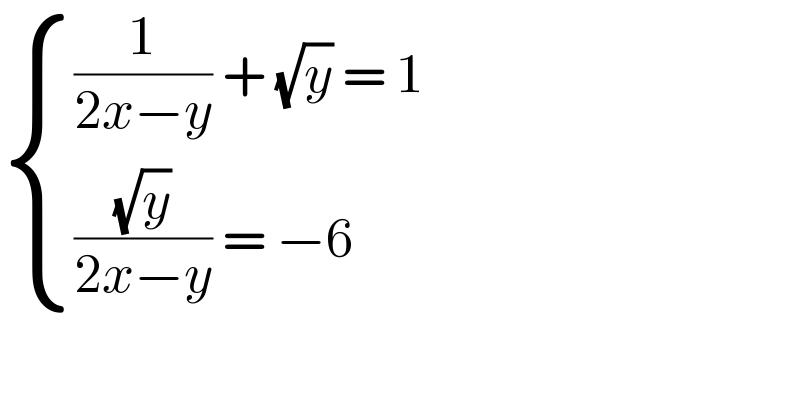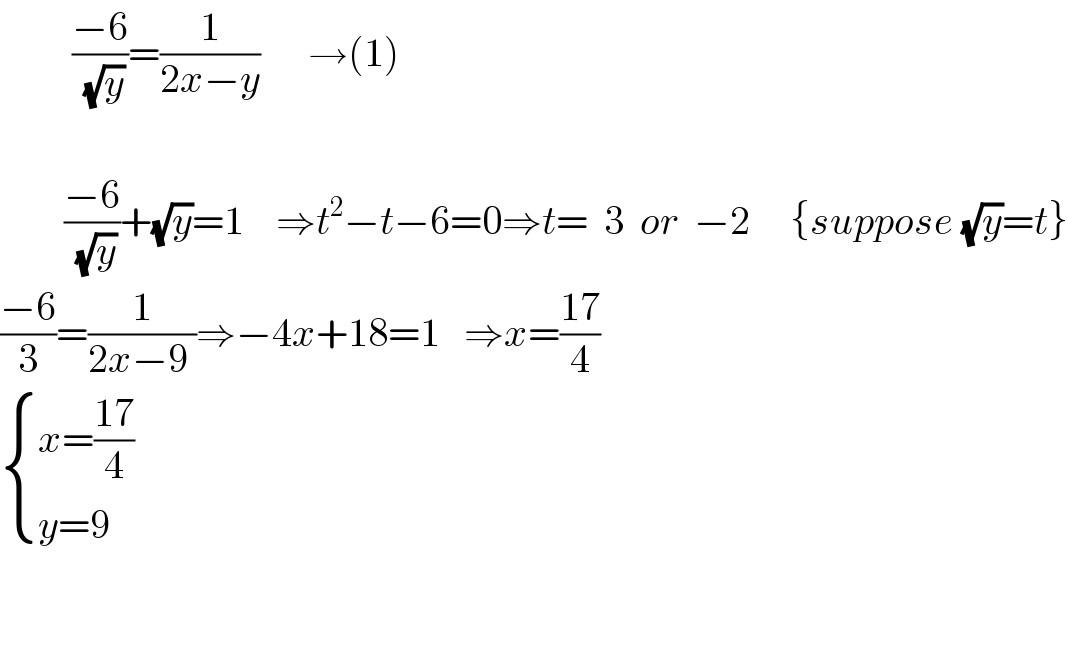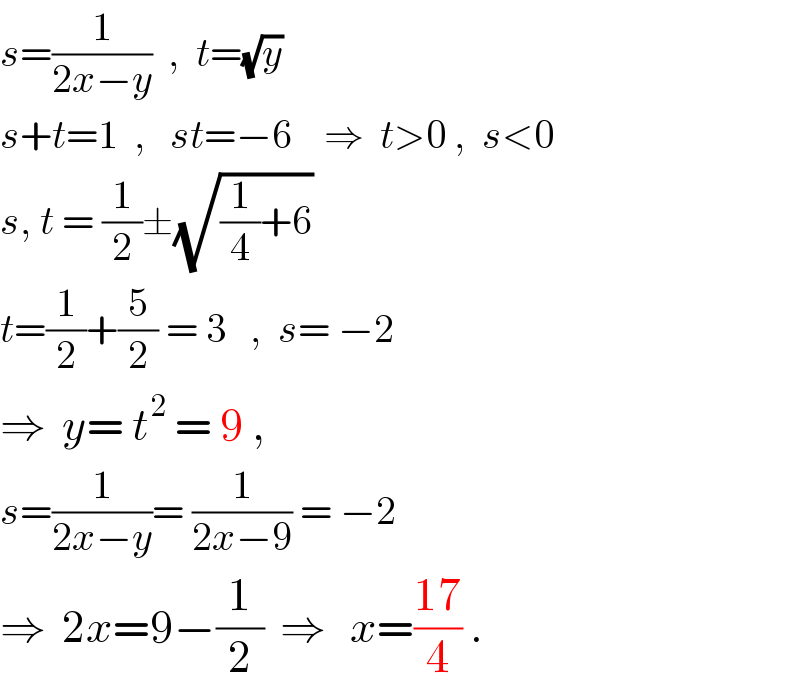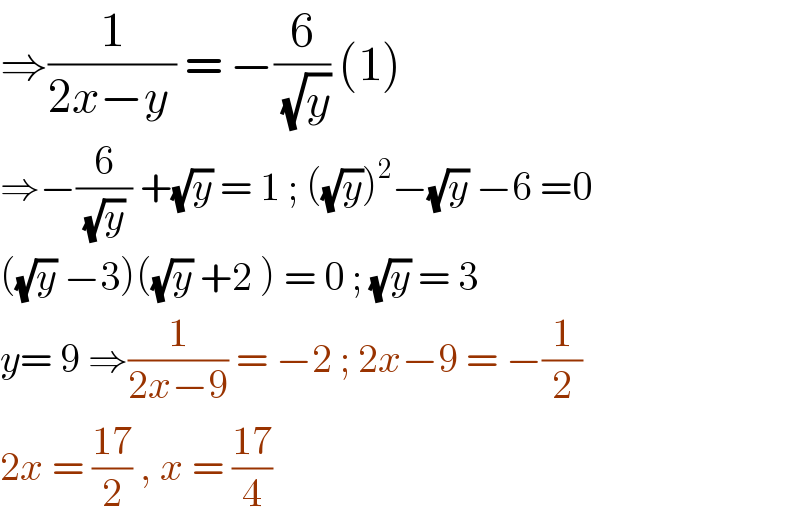
Question and Answers Forum
Question Number 100954 by bobhans last updated on 29/Jun/20

Commented by Dwaipayan Shikari last updated on 29/Jun/20

Answered by ajfour last updated on 29/Jun/20

Answered by john santu last updated on 29/Jun/20

| ||
Question and Answers Forum | ||
Question Number 100954 by bobhans last updated on 29/Jun/20 | ||
 | ||
Commented by Dwaipayan Shikari last updated on 29/Jun/20 | ||
 | ||
Answered by ajfour last updated on 29/Jun/20 | ||
 | ||
| ||
Answered by john santu last updated on 29/Jun/20 | ||
 | ||
| ||